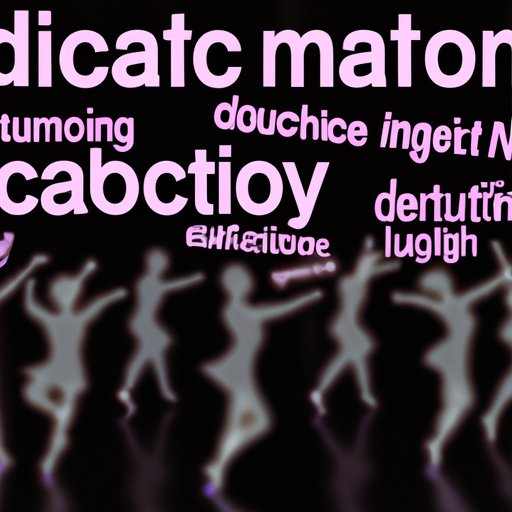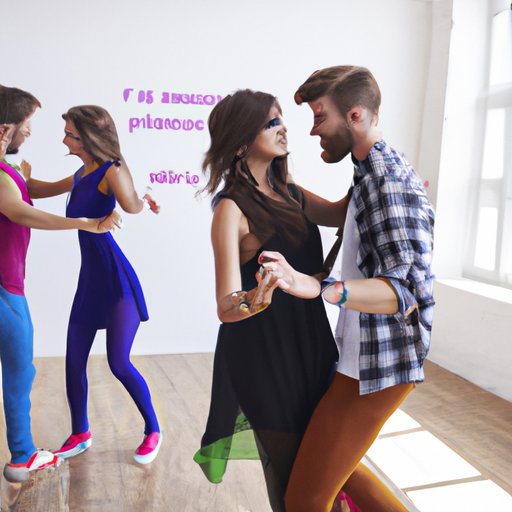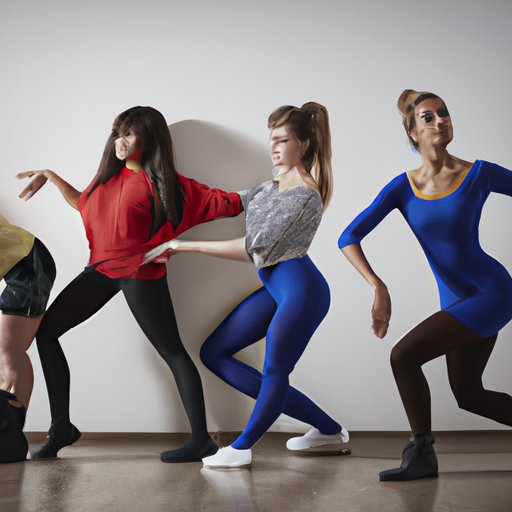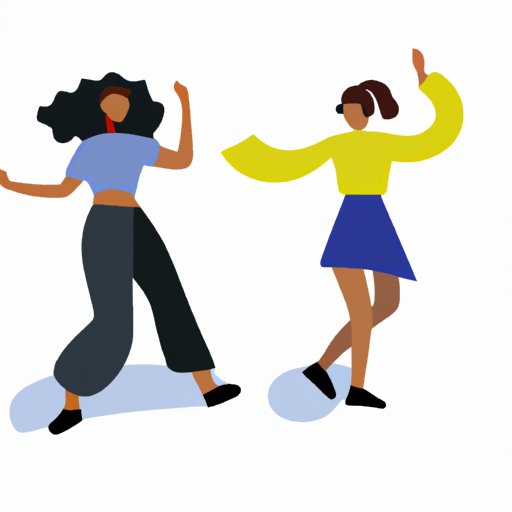Introduction
Dancing has been around since ancient times, and it’s still a popular form of expression today. But why do people dance? What are the benefits of dancing? This article will explore these questions by looking at the physical and mental health benefits of dancing, how it can be used as a form of social interaction, its cultural significance, and how music influences dancing.

Exploring the Benefits of Dance on Physical and Mental Health
Dance is often thought of as a form of exercise, and there are many physical benefits associated with it. According to the American Heart Association, “dancing can be an excellent form of aerobic exercise” that can improve cardiovascular fitness, muscular strength, and endurance. It can also help improve coordination, balance, and flexibility. In addition, research has found that dance can be used as a therapeutic tool to improve physical health, reduce stress, and increase self-esteem.
The mental health benefits of dancing are just as important as the physical ones. Studies have shown that dancing can boost mood, reduce anxiety, and even improve memory. It can also help promote creative thinking and provide an outlet for emotions. Furthermore, dance can be used as a form of self-expression, allowing people to express themselves in ways they may not be able to do through words.

Examining the Role of Dance in Social Interaction
Dance can also be used as a way to connect people. Whether it’s two people dancing together or a group of people dancing in unison, the act of moving together creates a feeling of unity and belonging. This can be especially beneficial for those who struggle with social interaction, as it can help them feel more comfortable in a group setting.
In addition to connecting people, dancing can also enhance communication. Through nonverbal cues such as facial expressions, body language, and hand gestures, dancers can communicate with each other without saying a word. This can be especially helpful for those who have difficulty expressing themselves verbally.
Investigating the Cultural Significance of Dance
Different cultures have different dances, and these dances often reflect the values, beliefs, and traditions of the culture they come from. For example, the traditional dances of Native Americans often focus on nature and the spiritual world, while the dances of African Americans often focus on the history of slavery and oppression. By participating in these dances, people can gain insight into the culture and values of the people who created them.
In addition, dance can be used to celebrate special occasions and holidays. From weddings to birthdays and religious ceremonies, dance can be used to bring people together and honor important moments in life. This can create a sense of belonging and community, as well as give people an opportunity to express themselves and share their culture with others.
Analyzing How Music Influences Dancing
Music is often seen as an integral part of dancing, and it can have a powerful influence on how people move. Different genres of music evoke different emotions, and these emotions can be expressed through movement. For example, fast-paced music often encourages more energetic movements, while slower music can lead to more graceful and subtle movements. Music can also inspire creativity, allowing dancers to experiment with new moves and create unique choreography.

Investigating How Different Styles of Dance Evolved
While there are many different styles of dance, some of the most popular styles today include ballet, jazz, and hip-hop. Ballet is one of the oldest forms of dance and is known for its grace and precision. Jazz is a more modern style that emphasizes improvisation and freedom of movement. Hip-hop is a street dance style that focuses on rhythm, energy, and attitude.
Each of these styles has evolved over time, incorporating elements from other styles and reflecting the culture and values of the time period in which it was created. For example, hip-hop has incorporated elements from jazz and funk, creating a unique style that has become popular around the world.
Conclusion
Dance can offer many benefits, both physical and mental. It can be used to improve physical health, reduce stress, and increase self-esteem. It can also be used as a form of social interaction, helping people connect with each other and express themselves in ways they may not be able to do through words. In addition, dance can reflect cultural values and celebrate special occasions. Finally, music can be a powerful influence on how people move, inspiring creativity and experimentation.
From the physical and mental benefits to its cultural significance and influence of music, dancing can be a powerful tool to help address the problem. So the next time you feel like moving your body, take a few minutes to dance and see how it can make you feel.
(Note: Is this article not meeting your expectations? Do you have knowledge or insights to share? Unlock new opportunities and expand your reach by joining our authors team. Click Registration to join us and share your expertise with our readers.)
